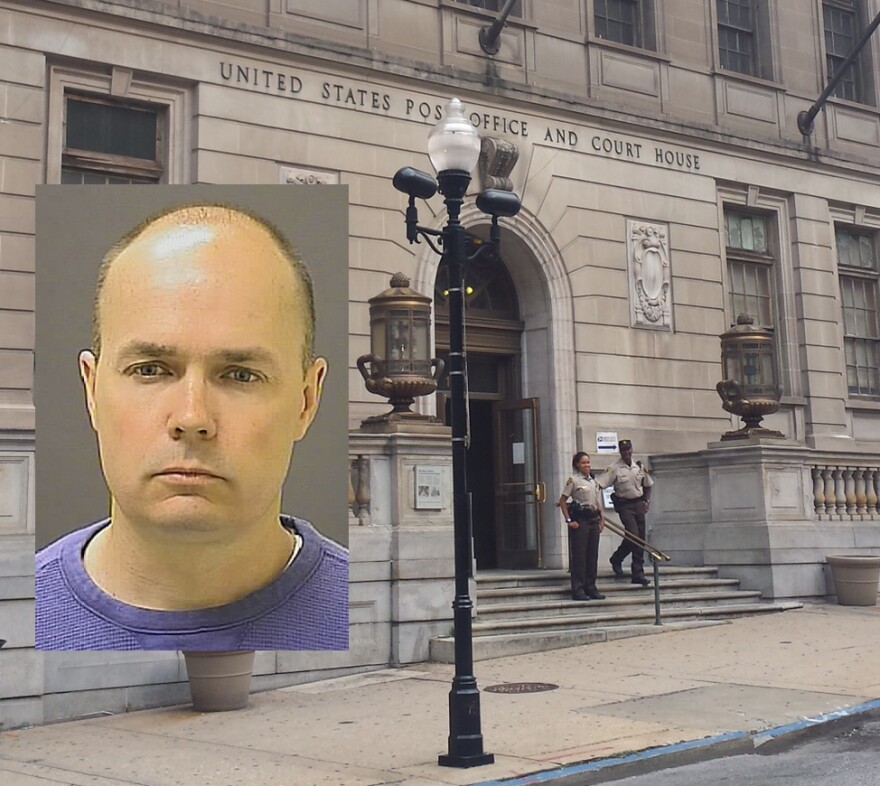The fate of Lt. Brian Rice is now in the hands of Baltimore Circuit Judge Barry Williams.
Williams heard closing arguments Thursday in the trial of Rice, the highest ranking officer in the Freddie Gray case. He is charged with involuntary manslaughter, reckless endangerment and misconduct in Gray’s death last year.
Judge Williams said he will render his verdict at 10 a.m. Monday.
Prosecutors were adamant that Rice was unreasonable and unprofessional in his conduct.
Deputy State’s Attorney Janice Bledsoe told Williams that Rice’s decisions cannot be blamed on poor judgment; that he was intentional about his actions on April 12, 2015,
the day Gray was arrested.
Then turning toward Rice, she said emphatically “he chose” to chase Gray; “he chose” to shackle Gray’s legs.
Bledsoe said Rice, as the shift commander, was “on notice” that he was required to seatbelt a prisoner in custody. And he knew the harm that would come to Gray if he didn’t follow that department policy.
She said Rice didn’t order any other officer to ensure Gray was secured by a seatbelt; nor did he do it himself.
Gray died from injuries suffered in the back of the police van during the trip from the 1700 block of Presbury Street, where he was arrested, to the Western District station.
Rice’s attorney, Michael Belsky, told Williams the state has proven that not only were his client’s actions reasonable, but that he had no other option considering the situation.
The defense has argued that Rice and other officers were dealing with a hostile crowd at the scene of the arrest and they had to get Gray and themselves away.
Prosecutors said the crowd was not as hostile or as large as the defense made it out to be.
Bledsoe played city closed circuit video of the van’s second stop at Mount and Baker streets; sarcastically pointing out the “large crowds forming” at the scene.
As in previous trials, Williams will have to decide whether the defendant acted as a reasonable officer would in a similar situation. He’ll also have to decide whether or not Rice, as the senior officer in charge, had the greatest responsibility the make sure Gray was in a seatbelt.
Analyzing the arguments
Warren Brown, a defense attorney and legal analyst who has watched all four trials in the Freddie Gray case, said he doesn’t think Williams is buying the state’s arguments.
“From the judge’s question of the prosecution, I glean from that that he is uncomfortable with the state’s position that the serious bodily injury or death was foreseeable to Lt. Rice by his not belting Freddie Gray in,” he said.
Brown also said prosecutors didn’t do themselves any favors by painting the scene at Gray’s arrest as quiet and calm and that he thought the defense did well focusing on the nine seconds they claim Rice spent in the van with Gray at the second stop.
“I think they did a good job in focusing on what’s in this officer’s mind in this evolving, fluid, ongoing, hostile situation during that period of time; because that’s really the focus there.”
David Jaros, a University of Baltimore Law School professor who has been watching the trials, said he thought prosecutors scored points challenging the defense claim of when Gray was injured.
Defense experts testified that the injury happened between the time the van picked up a suspect at Pennsylvania and North avenues and when it returned to the Western District station.
“They suggested that it would be extremely coincidental for this person to be sitting in that position, get up, sustain the fatal injury and then fall back into the exact same position that he’s found in stop six,” he said.
At the same time, Jaros also thought the defense scored as well in painting Gray’s arrest scene from Rice’s perspective.
“That the police perceived it to be a threatening scene and that there still had to be sufficient evidence to conclude beyond a reasonable doubt that Lt. Rice was thinking about the danger he placed Freddie Gray in when he failed to seatbelt him,” Jaros said.





